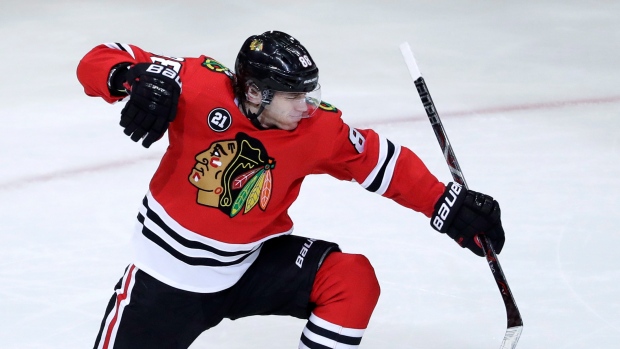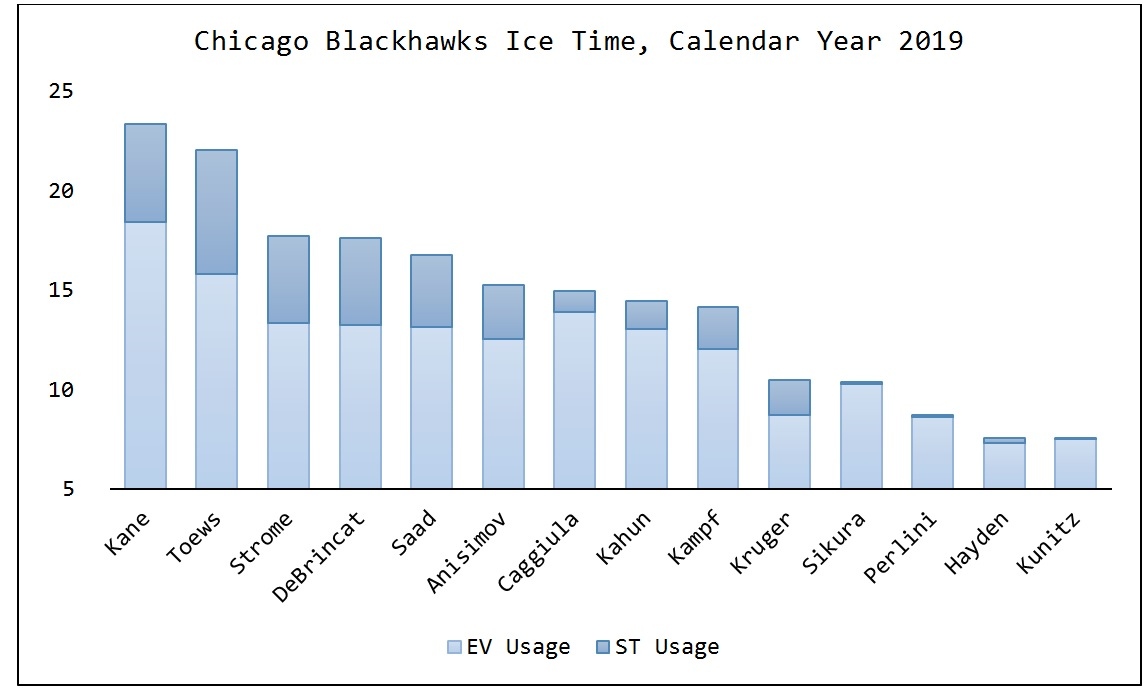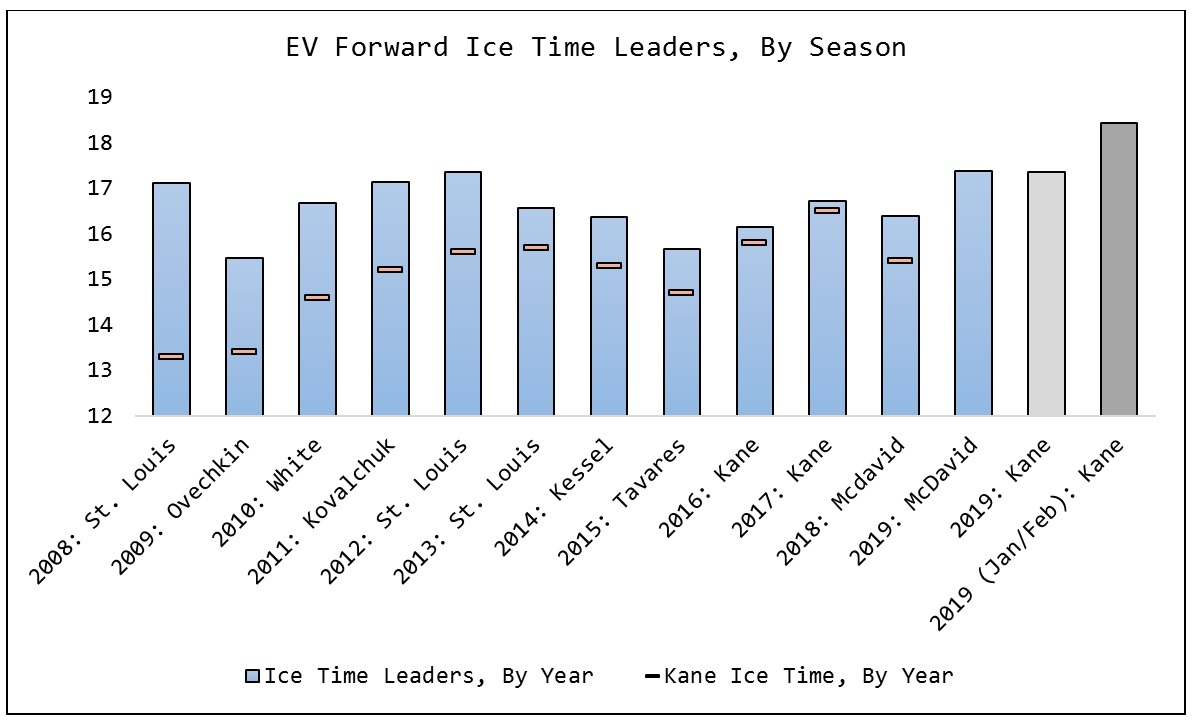Feb 28, 2019
Blackhawks placing heavy burden on Kane
The Chicago winger is shouldering an incredible workload during his team’s frantic push for a postseason spot, Travis Yost writes.
By Travis Yost

How much can you squeeze out of one hockey player? The Chicago Blackhawks are trying to answer that question.
Chicago has spent the last two months frantically trying to erase an ugly start to the regular season. Their start was so awful (they accumulated just 23 points in the opening 30 games, worst in the NHL) that a white-hot run has only marginally improved their playoff chances. One simulation gives them about a 3 per cent chance. Another gives them a 4 per cent chance. In short: barring a blistering run through March and April, the Blackhawks will again miss the postseason.
It isn’t for lack of trying. Head coach Jeremy Colliton has been trying to squeeze everything possible out of his lineup – a lineup that’s low on talent and difficult to improve due to lingering salary cap issues. Colliton still has the likes of Patrick Kane, Jonathan Toews, and Brandon Saad at his disposal though, to couple with up-and-comers Alex DeBrincat and Dylan Strome.
Colliton is aggressively leaning on his core, but he’s taken it to another level with Kane. The Chicago winger is second in the league in scoring, and, if the Blackhawks hadn’t struggled so emphatically in the earlier parts of the season, he would likely be in the Hart Trophy conversation.
Kane is seeing minutes like never before in a trend that is likely to continue until Chicago is mathematically eliminated from the playoffs. It makes sense to ride your stars, but it’s worth showing just how burdensome Kane’s workload is right now.
Compare Kane in the context of other Blackhawks skaters. He and Toews are seeing nearly 30 per cent more workload than the third-most-utilized skater on the team (Strome). Kane is an even bigger outlier when you consider 5-on-5 play only. Kane is playing more than 18 minutes a night at 5-on-5 (nearly 40 per cent more than Strome, for example), which is outrageous:

How is Colliton getting Kane into these minutes? The short answer is that Colliton is loading up on first-line shifts and, where he can, double-shifting Kane.
Whenever Chicago has played with seven defenders, it’s generally Kane getting the rotational fourth-line minutes. Whenever Chicago falls behind late in a game, it’s generally Kane getting the ‘chasing the game’ double shift. Every opportunity that the team gets, they try to get Kane on the ice.
That’s true for most superstars of course, but Kane is venturing into an area that we haven’t seen – at least not in the modern era. If you look at the minutes leaders (we will focus on 5-on-5 here to make an apples-to-apples comparison), you can see that Kane has a real shot at averaging the most minutes per game of any forward since at least the 2007-08 season. It’s particularly noteworthy that he has taken it to another extreme in the last two months. Averaging more than 18 minutes a night at even strength is truly unprecedented:

Kane has always played a lot of minutes, but this season is an extraordinary high for him. That’s particularly interesting at a time when most of the coaching and deployment strategy across the league is focused on keeping star players as fresh as possible for the duration of a season, and shortening shifts to offset the way performance degrades over time. Chicago, partly because there is little other choice, has gone in the opposite direction.
(Side note: it is interesting that we are seeing the same thing with Connor McDavid in Edmonton this year. Same issues, generally speaking – the team is top-heavy, desperate for a playoff bid, and reliant on star players to even have a shot at winning hockey games.)
So far, it’s working. The Blackhawks are a definitively better team of late, and that’s particularly true in those outrageous 5-on-5 minutes Kane is playing. Over this stretch, the Blackhawks are +8 in goals with Kane on the ice (58 per cent Goal%), and -10 in goals (42 per cent Goal%) with him off the ice. This, of course, ignores Chicago’s blistering power play, which has helped the team surge in the standings.
It’s unlikely that this push will get the Blackhawks past game 82, but it’s fascinating to watch a team try something that we rarely see. How much burden can one player wear, and can Kane change the way we think about ice time allocation for star players at the end of this? It’s an interesting question.

